Notes
The Dysfunctional Guitar: More on the Reuters Syria Photo Controversy
(click for full size)
Two days ago, I wrote a post with analysis from photojournalists, photo editors and reporters familiar with the civil war in Syria about the suspect nature of a Reuters photo story from Aleppo. That story, about a 10-year-old boy allegedly working in an Aleppo munitions factory, was particularly important because of the wide distribution and accolades the story received across the media last year.
In the course of researching that story, colleagues of mine alerted me to more published images from the same Reuters freelancer, Hamid Khatib, that they also deemed unusual. These photos involve the appearance and status of a guitar. If one of the photos also enjoyed wide circulation, these images didn’t carry the impact of the full-blown photo story and narrative development of the boy in the bomb factory. If not for the stories published over the past two weeks by the New York Times Lens Blog and NPPA about image authenticity and ethical questions surrounding Reuters’ employment of Syrian activists working as freelancers, I would likely not be bringing them to your attention at all.
In this atmosphere of doubt, however, I feel it’s worthwhile to consider these images involving the presence of this musical instrument in multiple images. What really convinced me to share them publicly, though, was less the role of the guitar than the confusing and misdirected explanation I received from Reuters after having contacted them. We all know the adage that “the coverup is worse than the crime.” To be clear, I am not accusing Reuters of being untruthful or intentionally obfuscating so much as I’m saying that the failure to address questions clearly and head on invites such an inference.
Otherwise, what we have here is more of a teaching moment. Talking with many colleagues this week, I know I’m not the only one who is frustrated with Reuters. Given blanket denials and the refusal to address specific information already published about the munitions story, it does a disservice to all the earnest professionals in the business, especially those working for the photo agency. It’s also difficult to dispense with doubts when what explanations have been provided by Reuters end up raising more questions than answers.
So, to the guitar.
The questions at hand involve the instrument above being lustily employed by a Syrian Rebel Army fighter. It also raises issues of context, the prop connoting music making and musical ability when it’s otherwise in no condition to be properly used. And what do I mean by that? Despite the fact this photo was used by the media to illustrate a good many news stories about the war in Syria as well as photo gallery after photo gallery extolling the hearty spirit of the Syrian resistance or the Syrian resistance fighters taking a breather from the civil war, apparently most photo editors failed to recognize that the instrument, badly worn with the detailing missing at key spots around the sound hole, was in such sad shape that it only had two strings.
But then, let’s consider the photo in the context of the staging allegations currently shadowing Reuters and Hamid Khatib. Besides the question of whether the instrument is even operable, I have no way to vouch for the musical skills of the Syrian resistance. It could be, perhaps, that they are all proficient guitar players — except, I assume, the Islamic fundamentalist factions that have entered the fray. What is curious though, in this photo taken near the Nairab military airport in Aleppo on February 26, 2013, is this second version photo which, less artful than the other, earned less attention.
In this shot, the clean shaven fighter (paradoxically wearing a face mask) is now playing the guitar while the fighter with the beard is holding the bullhorn. (You guitar players out there might also tell me if it’s odd at all that the fighters left hand on the fretboard is positioned to hold down strings that aren’t there.)
Not that the presence of props in news photos is even that newsworthy. In most cases though, I imagine we’re talking about singular instances, as well as props that belong to the subjects in the photo.
The discussion gets more interesting, however, when this portrait of a rebel in the Izaa district of Aleppo on February 24th, just two days before, also taken by Mr. Khatib, sports an instrument with pit marks on its left side (by way of this extra large version of the photo) which are quite similar to those on the one leading the post.
But wait. The thread of the story gets more curious still.
Let’s take a look, now, at this photo posted on Mr. Khatib’s Facebook page. It shows the photographer walking down the street carrying the same guitar, with the same missing strings and the same pattern of detailing worn away from the sound hole as the instrument we see in the news photos he took at the airport. To situate us in time, this Facebook photo is dated February 22, 2013. The shot of the fighter with the guitar in the background was taken two days later, and the photo of the trio near the airport was taken four days later, on the 26th.
And then, there’s still another quirky detail to bring to your attention. If you look very carefully at the guitar slung over Mr. Khatib’s shoulder, it appears to have three strings, not two. It looks like there was one string attached, if not so securely, at the side of the fretboard opposite from the other two.
Now let’s go back and look at the photo at the top of the post, and click it to full size. Again, if you look carefully, you’ll see that that third string on the opposite end is still attached but now dangling free. You can see it against the iron fence work and also against the background of the white wall. I don’t belabor this just to further identify the guitar but more to elaborate its poor condition. And if the instrument was used as a prop, one supplied by Mr. Khatib — as I was told through a reliable source that he was seen transporting it around, along with a tambourine, in his car — you could imagine that a photo designed to convey a scene of musical talent and revolutionary fervor wouldn’t phase those participants even if one of the strings on the already hardly-playable guitar happened to suddenly boing free.
Now, let’s shift to my questions for the Reuters spokesperson about the data above. What I asked her in an email was:
- Does Reuters deny that Khatib supplied the guitar as a prop in any of the photos?
- Is it the opinion of Reuters that the photos of rebels playing the guitar are credible given the condition of the instrument?
- Did Khatib (or his wife, also a Reuters freelancer) supply this guitar to different rebels for the purpose of taking their photos with it?
- Did Khatib place the guitar in the background of the February 24th image?
and,
- Is it the opinion of Reuters that these fighters know how to play the guitar?
Interestingly, the Reuters spokesperson didn’t answer my questions but, instead, threw a new twist into the story. She answered back:
The guitar belongs to a well-known Syrian singer who is known for visiting and performing on the rebels’ front lines. Hamid Khatib covered her for three days, during which all of these pictures were taken. In some frames that were not served on our wire, the singer is visible. She took the guitar with her when she and Hamid separated.
So, what is it the March Hare said? “I have an excellent idea, LETS CHANGE THE SUBJECT.” Without turning this post into a full blown detective novel, I did a good bit of digging into the twist and there is, in fact, a girl, identified as Nasma, and sometimes, Nesma, who has gained quite a bit of notoriety in Aleppo, on the ground and online too, for singing at Free Syrian Army protests and rallies.
Here is a EuroNews video feature on her. Here she is, too, in a shocking video where she’s singing, then is almost blown up by a street bomb, in a piece of footage that made its way into a prominent documentary, “Not Anymore: A Story of Revolution” on the civil war (time code: 7:45 – 8:33).
The thing is, as hard as I tried, I could only turn up one photo that spoke to the Reuters scenario:
As far as I could tell, this is the only photo of Nasma that was taken by Khatib that was published and none of Khatib’s published Reuters photos including a guitar shows Nasma. On top of that, I could find no image at all, still or video — and, as I said, there are many examples online — that shows Nasma using, holding or even in the same frame as a guitar. (She is even featured in these six photos on a Chinese photo bucket site leading chants while one guy bangs a drum. But no guitar.)
Relating this back to the Reuters spokesperson, I asked if she had any reaction. And, I asked three more questions:
What photos are you referring to when you say “all of the pictures?”
If Khatib covered Nasma for three days, where are the images?
and,
Can you direct me to any other image of Nasma taken by Khatib that was published besides the one above?
The answer I received was: we’ll get back to you. (And if and when they do, I’ll gladly update the post with the reply. …For the record, I also reached out to Mr. Khatib three days ago via his Facebook page to provide him an opportunity to respond. I sent him the same set of questions I submitted to Reuters, but he never replied.)
As previously mentioned, what I’ve detailed above might not even earn a reprimand from the union, my interest having as much to do with the Reuters response. If you noticed, though, I did briefly mention Khatib’s wife. If you’ve been attentive to newswire photos of the Syrian civil war, you might recognize the photo below which enjoyed more circulation (and is certainly the most romantic depiction of the anti-Assad fighters) than any other picture in this piece.
I wouldn’t dare try and link this guitar — since its largely hidden from us — to the one I’ve been discussing above — especially after the Reuters spokesperson added that this particular instrument, “based on their investigation,” is not the same as the one in the airport photos.
At the same time however, Nour Kelze’s photo (which is her real name, not Zain Karam, the pseudonym she’s identified by in most of the credits on the photo I’ve seen) does stoke my curiosity. Taken on September 24, 2012, five months before the photos taken by her husband above, I imagine this one has three strings at least.
See our previous post — Were the Reuters “Boy in a Syrian Bomb Factory” Photos Staged? — analyzing the images from Reuters’ photo story of Issa, a 10-year-old boy who allegedly works in an Aleppo munitions factory. The post was written with analysis from photojournalists, photo editors and reporters familiar with the equipment and the operation of these rudimentary factories in Aleppo.
(photos: Hamid Khatib/Reuters. last photo: Zain Karam/Reuters. caption: A Free Syrian Army fighter, carrying a weapon on his back, plays a guitar as he walks through a street near Aleppo September 24, 2012)
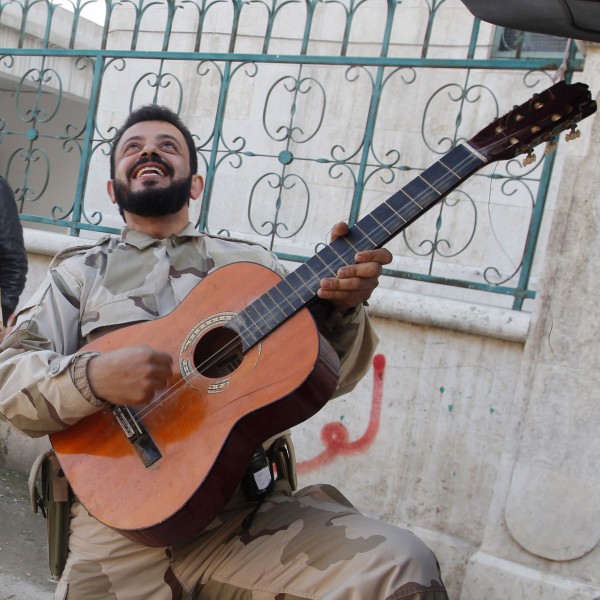


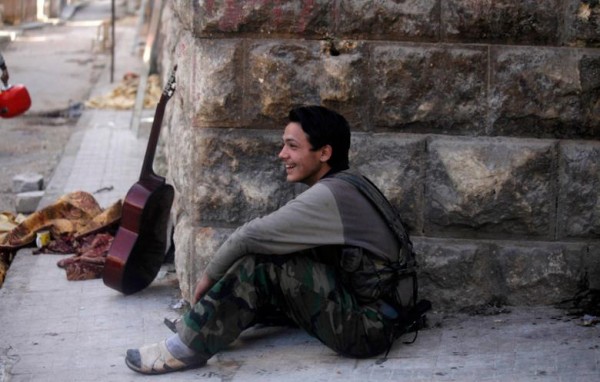
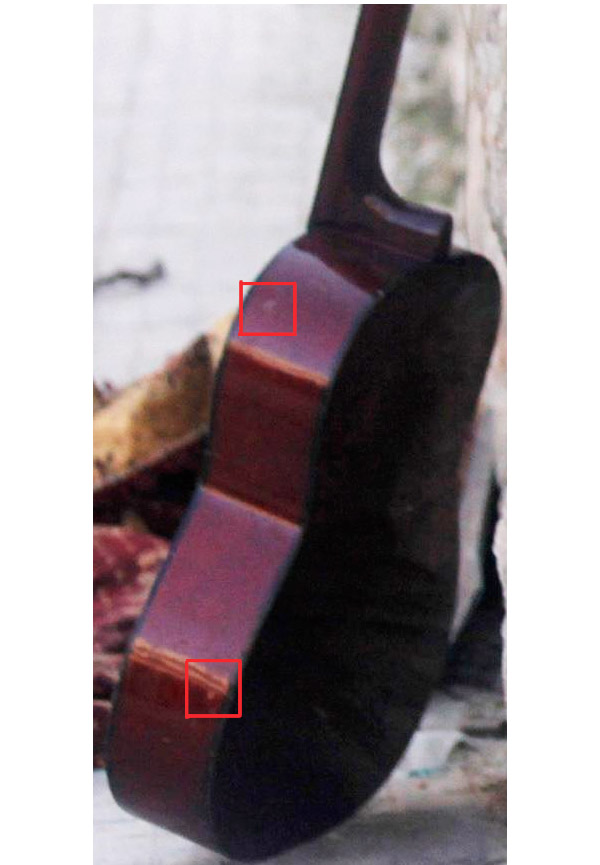
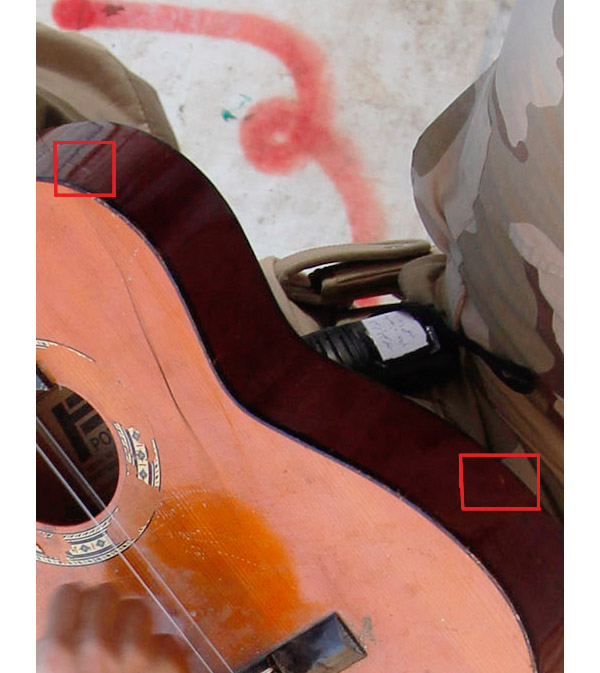
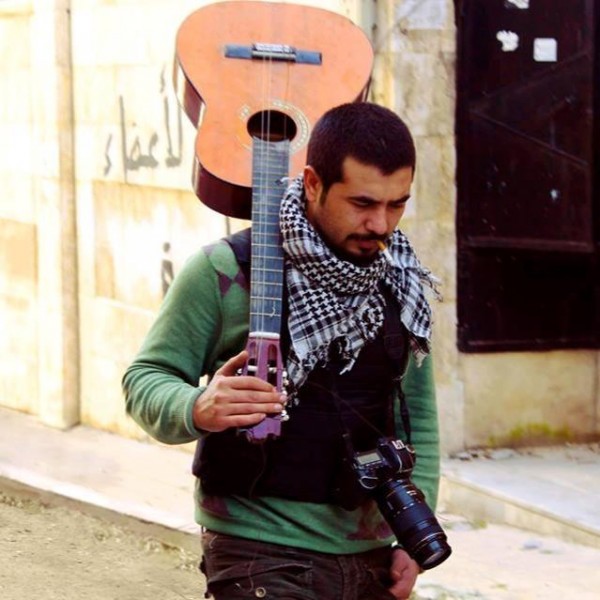
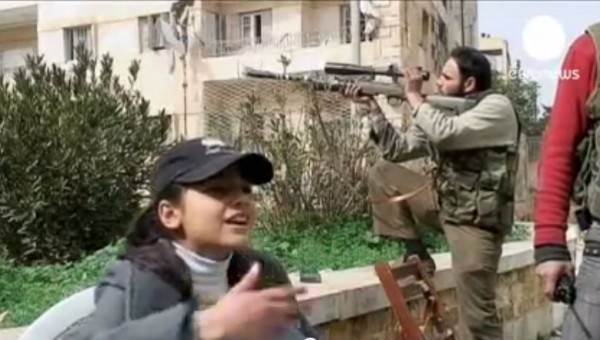

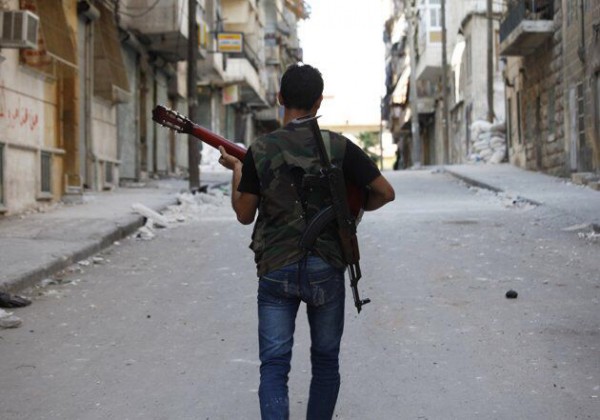
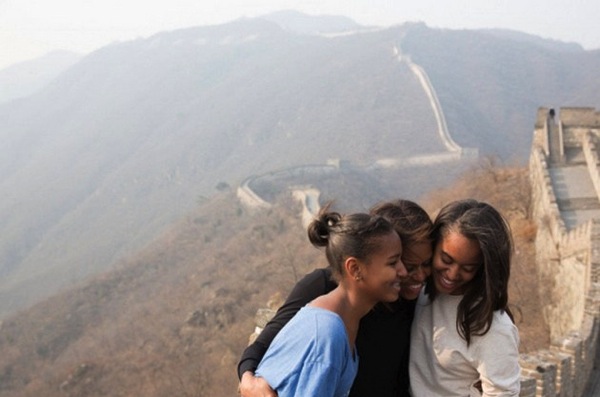
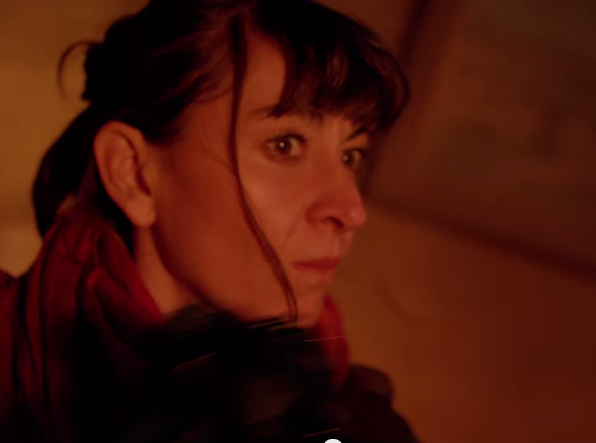
Reactions
Comments Powered by Disqus